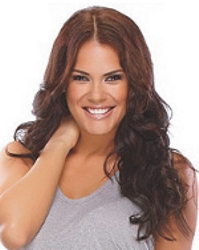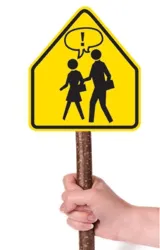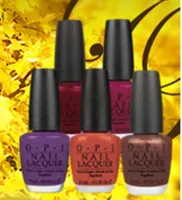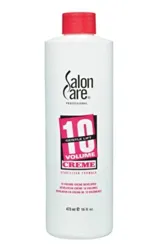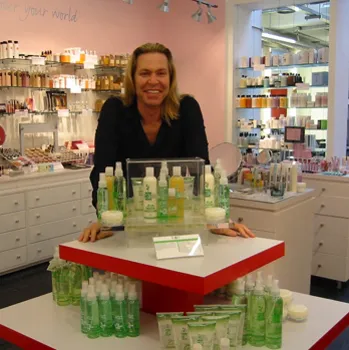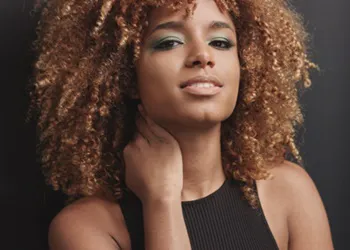
Hair Color Code And Adverse Reactions - How To Deal
Hair Color Code And Adverse Reactions - How To Deal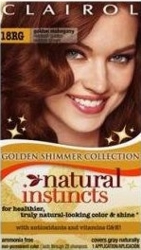 Coloring your hair should be a fun and exciting experience, whether you do it yourself (DIY) or have your favorite professional hair colorist do it for you.
Coloring your hair should be a fun and exciting experience, whether you do it yourself (DIY) or have your favorite professional hair colorist do it for you.
After all, you're embarking on a new adventure. Whether you're changing your base color or just adding a few fun highlights and low lights you desired to enjoy your hair color journey.
Listed below are some hair color codes to follow to make sure you enjoy great hue happenings:
1. Preventing Reactions - Although rare, professional estimates are that there are two main adverse hair color reactions which occur on every million people (men, women, children) who color their hair, or have it colored by a professional. Even the big guns in the hair color world will have that random client who has a reaction. The good news? There are ways to look out for the potential reactions and cut them off at the pass before they occur.
2. Knowing Your Reactions - Basically there are two types of hair color reactions, allergic and sensitivity. The allergic reaction is a definite and easily diagnosed condition. A. Allergic Hair Color Reaction
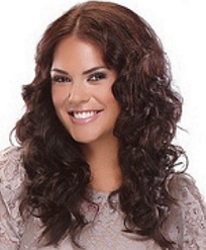 An allergic hair color reaction can occur not just to the area where the hair color has been applied, but to the scalp, the face, ears and adjacent skin areas. A strong allergic reaction will travel to your bloodstream. When that happens your histamines go nuts and your body inflames. Your eyes, ears, lips or face may swell. You may also develop a full blown body rash, hives or the inability to open your eyelids.
An allergic hair color reaction can occur not just to the area where the hair color has been applied, but to the scalp, the face, ears and adjacent skin areas. A strong allergic reaction will travel to your bloodstream. When that happens your histamines go nuts and your body inflames. Your eyes, ears, lips or face may swell. You may also develop a full blown body rash, hives or the inability to open your eyelids.
(Images in this section courtesy of easihair clip-in strandsfrom the new Jon Renau easihair clip-in strands - All Rights Reserved)
You also may experience a series of physical reactions ranging from nausea and vomiting to dizziness, confusion or difficulty breathing. A lot will depend on how severe the reaction may be. When this happens call your physician or head to the nearest doc-in-the-box. When the reaction has entered your bloodstream and spread, things could get very serious, very fast. Don't ignore this type of reaction.
B. Sensitivity Reaction
Unlike an allergic hair color reaction which can impact the entire body, a sensitivity reaction will only impact the areas where the hair color has been applied. The scalp may become itchy, sore or even inflamed. When a sensitivity reaction occurs the best coarse of action is to use a very mild, aroma free shampoo or cleansing product.
Wash your hair every day, whether you normally do or not to continue to neutralize the reaction. Allow hair to aid dry since hot blow dryers will only irritate inflamed or sensitive scalps. Of course when in doubt contact your physician. However, in most cases a sensitivity reaction is not as serious as a full-blown allergic reaction.
 3. Avoid aftercare tools which can worsen the situation
3. Avoid aftercare tools which can worsen the situation
Although many people tend to reach for medicated shampoo products thinking that will help. In reality it can actually worsen the situation. So can perfumed shampoos, styling products with aromas or hot tools such as blow dryers, irons or hot rollers. The scalp is usually either swollen (allergic reaction) or inflamed (sensitivity) and needs to be treated with tender care (think TLC).
Besides using a very gentle aroma free shampoo, avoid hot water opting for lukewarm or even cool. To ease the burning on the scalp, you can use aloe gel which will cool the scalp or even ice packs left in place for only a few minutes at a time (5-10 minutes). Always ask your primary physician for any other recommendations that might help with any residual soreness, itching or irritation.
4. Know the culprits
Although most people assume that bleach is the most likely culprit for either type of major adverse reaction, in general the cause of reactions is para phenylenediamine and all it's common derivatives. This chemical is known as PPD. PPDs have been used in hair color products for over 100 years. The strength and intensity of PPD may have changed with time, but the majority of hair color products contain some form of this chemical because PPD infuses the hair shaft with color.
Bleach can cause adverse reactions such as burning or blistering of the scalp, but this is almost always due to being left on the head too long. A reaction to bleach is normally not either an allergic or sensitivity reaction. Bleach reactions area almost always a user error related adverse reaction. If you decide to use bleach or allow your hairdresser to do so, make sure you follow the timing instructions carefully to avoid burns, blistering or scabbing.
 5. Natural hair color products are not risk free
5. Natural hair color products are not risk free
Don't forget that plants and herbs can be as toxic, if not more so, than chemicals. This is a mistake people make when they select all natural products. Even the purest form of henna can cause an adverse reaction in some people. Ditto with hair colors tagged as all natural or chemical free. Keep that in mind when you or your stylist reach for the natural hair colors. While they may not contain PPD there is still a risk of either an allergic or adverse reaction.
To achieve browns or similar colors all natural hair colors utilize metal oxides which are coppers and leads. Some users can definitely have an adverse reaction to those as well.
(Image courtesy of easihair clip-in strandsfrom the new Jon Renau easihair clip-in strands - All Rights Reserved)
6. Take preventative actions to avoid risks
Preventive measures are always the best plan. If you do develop a reaction, either allergic or sensitivity based, you can know the symptoms and know whether to get medical care. Meanwhile, do a patch test which involves hair and skin every single time your color your hair, no matter how many times you used a product or hair color in the past. You never know what the tipping point might be for developing an allergy or sensitivity to your long term hair color brand.
It's always best to do a patch test 3 days in advance since adverse reactions may take up to 72 hours to manifest. While rare, this is an important piece of information to know and understand. Even if you go to a professional hair colorist insist on a 3 day patch test process.
Some medications or hormonal changes make people more sensitive than normal to hair dyes. Which is why a patch test is always the best course of prevention against reactions.
People prone to developing eczema or related skin rashes or who have asthma or chronic bronchitis or lung problems are more prone to develop hair color allergies than those who don't have those medical conditions. If you do a patch test and there is a reaction of any kind to the test then leave well enough alone. A reaction to a patch test is definitely a warning that you could have a full blown reaction.
8. Honesty is the best policy
If you have a tendency to overload your hair with different chemicals you are most at risk of potential sensitivity. Also, it's important to always be completely honest with your stylist about the products you've been using. They can assess the potential risk and help you avoid potential reactions. Once you experience a PPD reaction chances are good that the next time you use a PPD product the reaction will be much worse. Which means you may have to avoid using any hair color products with PPD for the future.
Summary
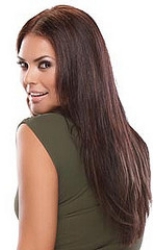 People have been coloring their hair for hundreds of years. Afterall, it's a wonderful form of self expression which can be fun, exciting and a new journey. However, it's important to make sure that you fun filled adventure doesn't go bad and cause your any type of physical harm or even pose a risk to your life.
People have been coloring their hair for hundreds of years. Afterall, it's a wonderful form of self expression which can be fun, exciting and a new journey. However, it's important to make sure that you fun filled adventure doesn't go bad and cause your any type of physical harm or even pose a risk to your life.
The good news? If you do develop an adverse reaction you can still change up your hair color or style with beautiful clip-in hair extensions or similar clip-in or fusion hair extensions. For more information about the gorgeous new Jon Renau easihair clip-in strands visit Twitter
More Information
Please follow me on Twitter at: http://Twitter.com/HairBoutique. I look forward to meeting new people from all walks of Twitter and learning from their Tweets. Visit us at Hairboutique.com located at: http://www.HairBoutique.com, on Facebook, MySpace and YouTube.
Thank you for visiting us at The HairBoutique Blog and for leaving your comments. They are very much appreciated. We apologize in advance but must remove any direct advertisements or solicitations.Social Media Network Information
Please follow us on Twitter at: https://Twitter.com/HairBoutique. I look forward to meeting new people from all walks of Twitter and learning from their Tweets.


